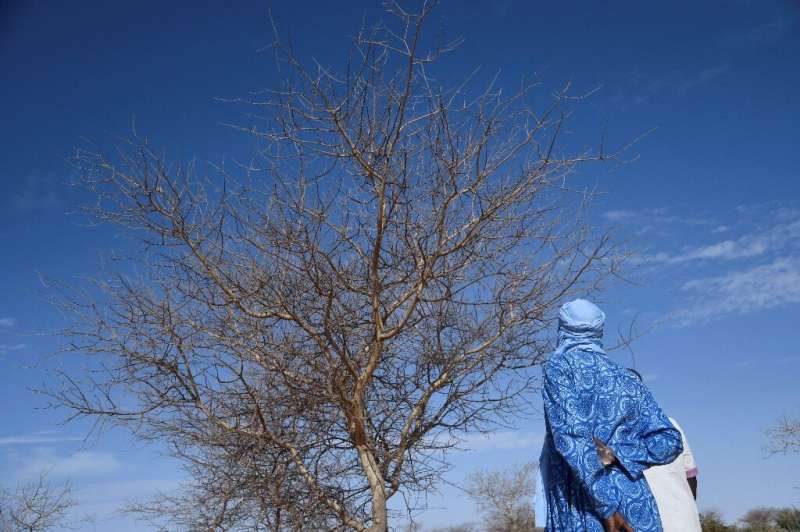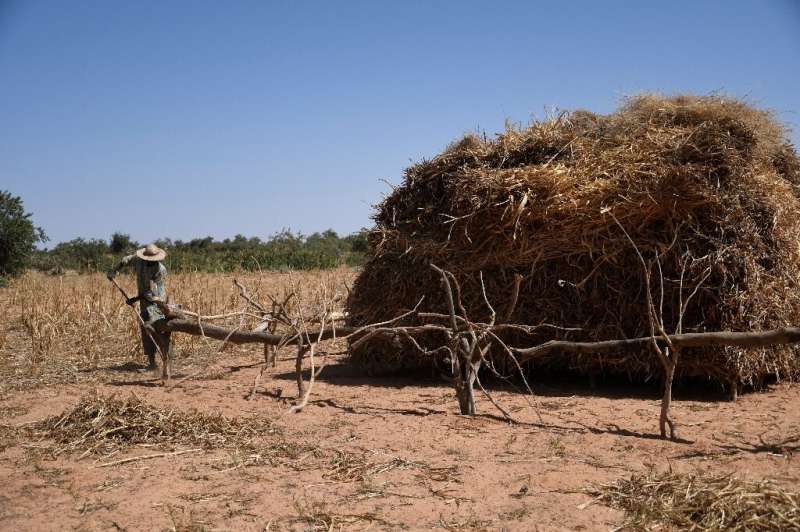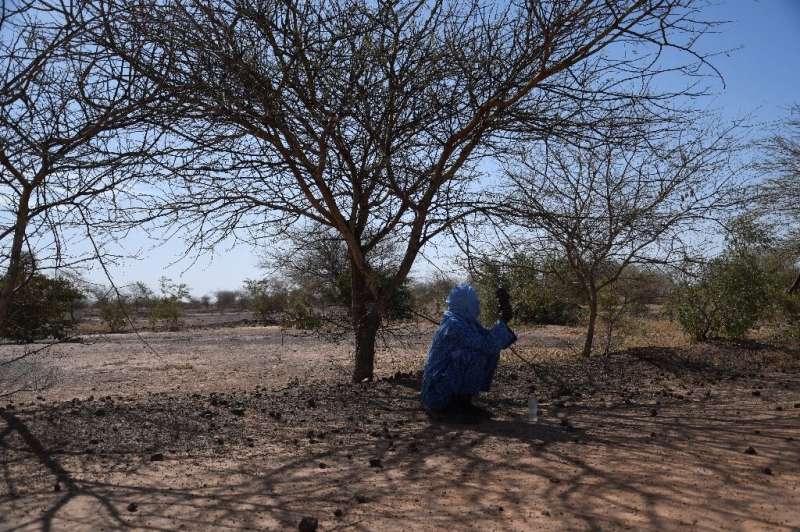By 2030, Niger aims to 'green' 3.6 million hectares of land, which represents more than 37.5 percent of its territory.
Once a desolate landscape, the Simiri plateau in Niger is now a small paradise for fauna and flora.
Goats crunch acacia seeds, squirrel and partridge prints dot the ground, praying mantises hang from trees and swarms of grasshoppers devour the verdant foliage.
"A small forest has miraculously been reborn," marvelled Simiri mayor Moussa Adamou.
The transformation is part of the African Union's Great Green Wall project, which aims to restore 100 million hectares of dry land by 2030 along an 8,000-kilometre (5,000-mile) strip stretching from Senegal in the west to Djibouti in the east.
Arable land is prized in landlocked Niger, where desert covers three-quarters of the territory and 80 percent of the population lives on subsistence farming.
The World Bank predicts its population will rise from 23 million in 2019 to 30 million in 2030 and 70 million in 2050, underlining the vital importance of the Green Wall's success.
Niger's contribution is mainly made up of white gum and Bauhinia rufescens trees, two drought-resistant species that can grow 12 metres (40 feet) tall.
Armed with pickaxes and spades, villagers built earthen embankments that hold rainwater around the saplings longer to ensure they grow even during droughts.
Arable land is prized in landlocked Niger, where desert covers three-quarters of the territory.
"Their leaves and seeds are rich in protein for livestock," explained local farmer Garba Moussa.
"Cooked or dried, we also eat them as survival food during severe food shortages," he added.
Mayor Adamou said that game animals and even giraffes have been leaving their remote habitat south of the capital Niamey to savour the tender acacia leaves since the Simiri plateau reforestation programme started in 2013.
Niger's southern forests have lost one-third of their surface area and now make up only one to two percent of the country, according to the United Nations Environment Programme.
By 2030, Niger aims to "green" 3.6 million hectares of land, which represents more than 37.5 percent of its territory, said Maisharou Abdou, the Green Wall's director-general in Niger.
Abdou said between eight and 12 percent of the total had been achieved by 2020, but emphasised the project was "a long-distance race".
Mouhamadou Souley, head of the anti-desertification services, added that work had already begun to extend Simiri's reforestation by another 65 hectares.
A farmer sits in the shade of a tree in the Great Green Wall site in Simiri, Niger.
Jihadist threat
To achieve this dream, the country—one of the world's poorest—needs more than 454.645 billion CFA francs ($780 million), he added.
The European Union, UN Food and Agriculture Organization, World Bank and other donors have already given money.
In addition to halting desertification, the Great Green Wall also focuses on access to water, solar energy and socio-economic development including market gardening, fish farming, cattle rearing and poultry farms to provide employment for the local population.
Local NGOs have joined the battle, with plans to reforest 100 hectares, cultivate nurseries and dig water wells, according to Issa Garba of Young Volunteers for the Environment.
However, the jihadist attacks that have plagued several Great Green Wall countries could jeopardise the project.
Niger expert Sani Yaou said farmers are afraid to carry out reforestation or tree maintenance activities due to the jihadist threat.
"Insecurity has dealt a heavy blow to its realisation... All countries are focused on the fight against insecurity," Garba added.
© 2021 AFP


























